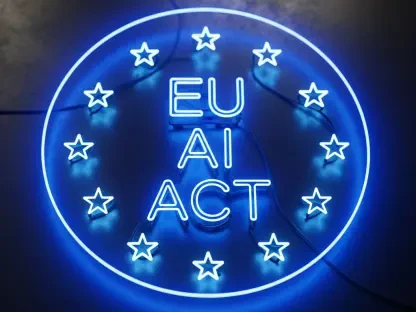Overview of the Stablecoin Industry
The stablecoin sector stands at a pivotal moment, with its market capitalization soaring past significant milestones and becoming a cornerstone of the cryptocurrency ecosystem, playing a vital role in modern financial systems. These digital assets, designed to maintain a stable value often pegged to fiat currencies like the US dollar, have emerged as critical tools for facilitating transactions, remittances, and decentralized finance (DeFi) applications. Their ability to bridge traditional finance with blockchain technology has driven widespread adoption, positioning stablecoins as a transformative force in global financial systems.
Beyond their role as a medium of exchange, stablecoins have become integral to liquidity provision in crypto markets, enabling seamless trading and yield-generating opportunities. Major players in this space include centralized issuers managing vast reserves and decentralized models relying on algorithmic mechanisms or over-collateralization. This dual structure highlights the diversity within the sector, yet it also underscores the urgent need for regulatory clarity to sustain growth and innovation.
The current state of the industry reveals a landscape fraught with potential but hampered by uncertainty. Regulatory frameworks in the United States remain fragmented, creating challenges for market participants striving to comply while pushing technological boundaries. As stablecoins continue to reshape financial interactions, the dialogue around governance and oversight has never been more pressing, setting the stage for influential voices to shape the path forward.
Analysis of Stablecoin Trends and Regulatory Dynamics
Current Market Trends and Key Players
Stablecoins have cemented their position as a driving force in the digital asset space, with transaction volumes reflecting their utility in both retail and institutional contexts. Centralized stablecoins, backed by tangible reserves and issued by regulated entities, dominate market share, providing users with confidence in their stability. Meanwhile, decentralized alternatives like LUSD, which operate through smart contracts without a central issuer, appeal to those prioritizing autonomy and transparency in financial systems.
Technological advancements underpin this growth, with blockchain innovations enhancing scalability and security for stablecoin transactions. The rise of layer-2 solutions and cross-chain interoperability has further expanded their use cases, from cross-border payments to integration in DeFi protocols. However, the rapid pace of adoption also amplifies risks, including systemic vulnerabilities and potential misuse, necessitating a balanced approach to oversight that preserves these advancements.
Looking at data from recent quarters, stablecoin issuance has seen consistent growth, with projections indicating sustained expansion through 2025 to 2027. This trajectory reflects increasing consumer and institutional trust, yet it also highlights the disparity between centralized and decentralized models in terms of regulatory scrutiny. Understanding these dynamics is essential for stakeholders aiming to navigate the evolving landscape effectively.
Regulatory Frameworks and Their Impact
The regulatory environment for stablecoins in the United States remains a complex puzzle, with overlapping jurisdictions and inconsistent guidelines creating uncertainty for industry participants. The GENIUS Act, a key piece of legislation, imposes specific requirements on stablecoin issuance, such as limiting it to authorized entities under Section 3(a). While intended to protect consumers and ensure financial stability, such provisions often fail to account for the unique nature of decentralized systems, stifling their development.
Agencies like the Financial Crimes Enforcement Network (FinCEN) play a significant role in addressing concerns around illicit financing, enforcing anti-money laundering (AML) and know-your-customer (KYC) mandates. However, applying traditional compliance frameworks to decentralized technologies poses challenges, as these systems often lack a central point of control. This mismatch has led to calls for modernized rules that can adapt to the nuances of blockchain-based assets without compromising security.
The impact of current regulations extends beyond compliance costs, influencing market dynamics by deterring innovation in certain segments of the stablecoin sector. For instance, overly stringent policies could push developers and firms to jurisdictions with more favorable conditions, potentially undermining the US position as a leader in fintech. Addressing these issues requires a nuanced perspective that considers both national interests and global competitiveness.
A16z’s Position on Decentralized Stablecoin Exemptions
Andreessen Horowitz’s cryptocurrency division, known as a16z crypto, has taken a proactive stance in advocating for exemptions for decentralized stablecoins under the GENIUS Act. The firm argues that these assets, which operate via autonomous smart contracts rather than a centralized issuer, should not fall under the same restrictions as their centralized counterparts, particularly Section 3(a). This distinction is critical to prevent undue burdens on systems that inherently lack a single point of accountability.
A16z emphasizes the importance of clear definitions within legislation to differentiate between centralized and decentralized models. Without such precision, there is a risk of misclassifying technologies, leading to regulatory overreach that could hinder DeFi innovation. The firm’s position reflects a broader industry sentiment that tailored policies are necessary to support the unique characteristics of decentralized finance while maintaining necessary safeguards.
Furthermore, a16z aligns its advocacy with principles from the CLARITY Act, which seeks to exclude non-custodial activities such as node operations and wallet development from regulatory oversight. By promoting this framework, the firm aims to protect the foundational elements of DeFi, ensuring that developers and users can operate without fear of disproportionate legal consequences. This approach underscores a vision for regulation that fosters rather than restricts technological progress.
Challenges in Balancing Oversight and Innovation
One of the primary obstacles in stablecoin regulation lies in the ambiguity of existing guidelines, which often fail to address the specificities of blockchain-based systems. This lack of clarity creates uncertainty for market participants, who must navigate a patchwork of state and federal rules while striving to innovate. The risk of misinterpretation looms large, potentially leading to penalties or operational setbacks for firms operating in good faith.
Another challenge arises from the inherent tension between compliance requirements and the autonomous nature of decentralized stablecoins. Traditional regulatory models, designed for centralized financial institutions, struggle to accommodate systems where no single entity holds control. This disconnect can result in policies that either overregulate, stifling creativity, or underregulate, leaving gaps in consumer protection and financial security.
To address these issues, a strategic balance must be struck, one that incorporates feedback from industry stakeholders and leverages technological solutions. For instance, integrating privacy-preserving tools like zero-knowledge proofs (ZKP) and multi-party computation (MPC) could enhance compliance without compromising user autonomy. Such measures highlight the potential for regulation to evolve in tandem with innovation, ensuring a sustainable path forward for the sector.
Future Outlook and Strategic Considerations
Emerging Trends and Technological Advancements
The stablecoin ecosystem continues to evolve rapidly, driven by technological breakthroughs and shifting consumer demands. Innovations in DeFi, such as automated market makers and yield farming protocols, are expanding the utility of stablecoins, making them indispensable in decentralized applications. Additionally, the integration of stablecoins into mainstream financial services signals a growing acceptance of digital assets as viable alternatives to traditional systems.
Global economic conditions also play a pivotal role in shaping adoption trends, with stablecoins offering a hedge against currency volatility in unstable regions. This utility is likely to fuel further growth, particularly as cross-border payment solutions become more efficient through blockchain technology. Forecasts suggest that from 2025 to 2027, the stablecoin market will see increased diversification, with new models emerging to address niche use cases and regulatory demands.
Privacy-focused solutions are gaining traction as well, responding to user concerns about data security in digital transactions. Technologies that enable anonymous yet verifiable interactions could redefine how stablecoins operate within regulated environments. Keeping pace with these developments will be crucial for policymakers and industry leaders aiming to harness the full potential of this transformative sector.
Potential Regulatory Developments
Anticipated changes in the US regulatory landscape for stablecoins hold significant implications for market disruptors and innovators. Proposals to modernize AML and KYC frameworks, as advocated by a16z, could pave the way for more flexible compliance mechanisms that accommodate decentralized systems. Such reforms might include guidelines that recognize the role of cryptographic tools in enhancing security and reducing fraud.
The push for clarity in distinguishing between centralized and decentralized stablecoins is expected to intensify, potentially leading to amendments in existing legislation like the GENIUS Act. If successful, these changes could establish a precedent for other digital assets, creating a more cohesive regulatory framework that supports industry growth. Collaboration between regulators and technology providers will be essential to ensure that policies remain relevant amid rapid advancements.
Moreover, the integration of national security priorities into stablecoin regulation is likely to shape future policies, with an emphasis on combating cybercrime while preserving innovation. A16z’s recommendations for decentralized digital identity systems offer a promising avenue for achieving this balance, potentially influencing how regulators approach oversight in the broader cryptocurrency space. Monitoring these developments will provide critical insights into the direction of digital asset governance.
Reflections and Path Forward
Reflecting on the comprehensive analysis, it becomes evident that the stablecoin sector stands at a critical juncture where regulatory clarity is paramount to unlocking its full potential. The advocacy by a16z for exemptions for decentralized stablecoins under existing laws highlights a pressing need for policies that recognize the distinct nature of these assets. Their push for integrating advanced privacy-preserving technologies also underscores a forward-thinking approach to addressing security and compliance challenges.
Looking back, the discussions around balancing oversight with innovation reveal deep-seated complexities in applying traditional financial regulations to decentralized systems. The challenges of ambiguous guidelines and potential overreach are persistent hurdles that risk stifling the very advancements stablecoins bring to the financial ecosystem. Yet, the proposed solutions, from nuanced legislative definitions to modern compliance tools, offer a glimpse of a more adaptive regulatory future.
Moving forward, stakeholders must prioritize actionable steps such as fostering dialogue between regulators and industry experts to craft tailored policies that support growth without compromising safety. Policymakers should consider pilot programs to test privacy-focused technologies like zero-knowledge proofs in real-world applications, ensuring practical outcomes guide future rules. Ultimately, a collaborative effort to build a regulatory environment that embraces technological progress while safeguarding national interests will be key to sustaining the momentum of stablecoin innovation.









